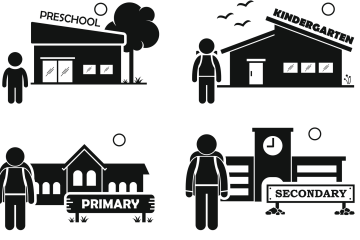With the state budget bill on the books, most loyal Gadfly readers have more time to kick back and read something other than legislation. Here’s a synopsis of a few recent reports that caught my eye.
Ohio has one of the nation’s largest AP opportunity gaps
Now in its sixth decade, the College Board’s Advanced Placement (AP) program has been one of the nation’s most successful education initiatives. The program today reaches more than 2.5 million high school students who take courses ranging from calculus to music theory. Students can earn college credits by passing end-of-course AP exams.
Despite efforts to expand AP, analysts have raised concerns about course-taking disparities by race and urbanicity. Using U.S. Department of Education data from the 2015–16 school year, a new report from the Center for American Progress (CAP) shines a light on such opportunity gaps. At a national level, the study shows that rural students typically have less access to AP—38 percent of them attend a high school that offers zero to three courses—compared to a national average of 21 percent. Black students also have less access to AP, though Hispanic students are more likely to attend schools that offer more AP courses.
The CAP analysis also provides useful state-by-state AP data. Data show that 35 percent of Ohio’s rural students attend high schools with minimal AP course offerings, close to the national average but higher than states like California and Florida. More troubling, however, are the AP opportunity gaps for Black and Hispanic students. CAP’s analysis reveals 51 percent of Ohio’s Black students attend schools offering just zero to three AP courses, whereas 48 percent of Hispanic students do so. Those figures far exceed the national averages of 27 and 19 percent for those respective groups. They also put Ohio at the very bottom of all fifty states when it comes to Black students’ access to AP coursework and third-worst for Hispanics.
While students of color may instead be participating in Ohio’s dual enrollment program, policymakers still ought to consider CAP’s recommendations for expanding access to AP. Promising ideas include creating a statewide organization dedicated to growing and supporting AP programs, requiring automatic enrollment in AP courses when students demonstrate proficiency in a subject, ensuring that AP exam fees are fully paid for, and reporting AP participation and exams data by student group. Hear, hear.
A new model to rank states’ charter sectors
Policy wonks have long debated the best approach to judging a state’s charter school sector. The two most prominent charter rankings come by way of the National Alliance for Public Charter Schools, the Center for Education Reform, and the National Association of Charter School Authorizers. While those rankings offer a useful perspective on how state policies align with model laws, some have criticized them for overlooking outcomes such as enrollment growth or student achievement. They have a point: States can have a charter law that looks great on paper but doesn’t do a whole lot of good for parents and students.
A new paper from the Education Freedom Institute (EFI) takes a fresh approach. Created by Kennesaw State University professors Benjamin Scafidi and Eric Wearne, this framework focuses on four equally weighted components: 1) charter school enrollment as a fraction of total public school enrollment; 2) accessibility to a charter school, as defined by the percentage of students in a zip code with a charter; and 3-4) charter students’ average learning gains in reading and math. A future iteration will add three more elements, including charter enrollment trends over time and low-income charter students’ learning gains in reading and math.
In terms of overall ranking, the top mark went to the District of Columbia, with that State up North coming in second, and Rhode Island third. Ohio ranked twentieth out of the thirty states in EFI’s ranking. Ohio’s charter sector fared better on the enrollment and accessibility metrics—tenth and fifteenth, respectively—but worse on academics (twentieth in reading and twenty-sixth in math). One big caveat, however. The EFI analysis relies on CREDO’s charter evaluations published in 2013, and Ohio’s charter sector has improved substantially over the past decade. The Buckeye State’s rank will almost surely rise once more recent data are used.
National data show where Ohio stands on enrollment losses, school funding
Dozens of news stories have covered public school enrollment declines for the 2020–21 school year. The slumping headcounts no doubt reflect the extraordinary circumstances of schooling during a pandemic. In January, I looked at preliminary data from the Ohio Department of Education and found that traditional school districts’ enrollments fell 2.8 percent relative to the prior year. Online charter school enrollments spiked, up 45 percent, while brick-and-mortar charters’ headcounts were virtually unchanged.
In late June, the U.S. Department of Education (USED) released its first look at national enrollment data from the past year. Across the country, enrollment dipped by about 1.5 million students in 2020–21, a loss of roughly 3 percent compared to the year prior with declines disproportionately in kindergarten. USED data show that Ohio’s public school enrollment declined by 2.63 percent, the twenty-eighth largest decline among U.S. states. Vermont and Mississippi posted the largest enrollment losses—more than 5 percent each—while the District of Columbia was the only jurisdiction to register an increase in headcounts, eking out a gain of 0.01 percent.
Last, sticking with news from our nation’s capital, USED also recently released school finance data for the 2018–19 school year (federal statistics arrive later than Ohio’s). According to the report, Ohio continues to keep good pace with the national spending averages. In FY 2019, Ohio spent $13,443 per pupil versus a national average of $13,187. In terms of ranking, Ohio came in twentieth place, ahead of neighboring states such as Indiana, Kentucky, and Michigan but trailing Pennsylvania. Those figures include only operational expenditures—things like salaries and benefits—and aren’t adjusted for cost-of-living differences across states. When capital outlay and debt service are included, Ohio’s K–12 spending rose to $15,396 per pupil versus a national average of $15,208.
* * *
Good research and solid data should always inform our policy priorities and debates. As we think about what’s next for Ohio policy, these reports offer useful ideas and information. Expanding AP opportunities to more high-ability students should be higher on the policy agenda, as should the push to increase access to high-quality charter schools. Policymakers will need to keep a close eye on whether enrollment declines persist and, as school funding debates continue, understand the facts about Ohio’s K–12 expenditures. If you agree, please consider diving in—both to the closest pool, and to these reports.




